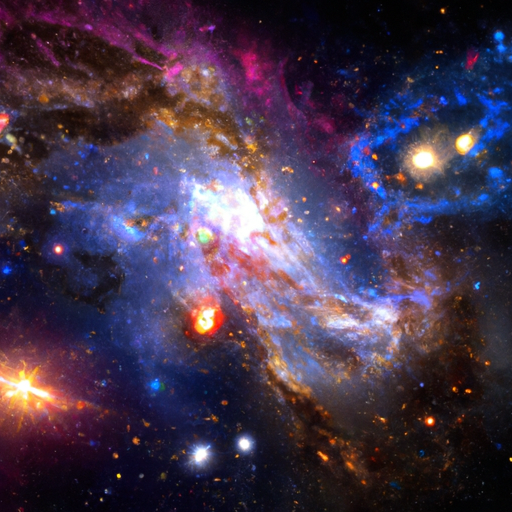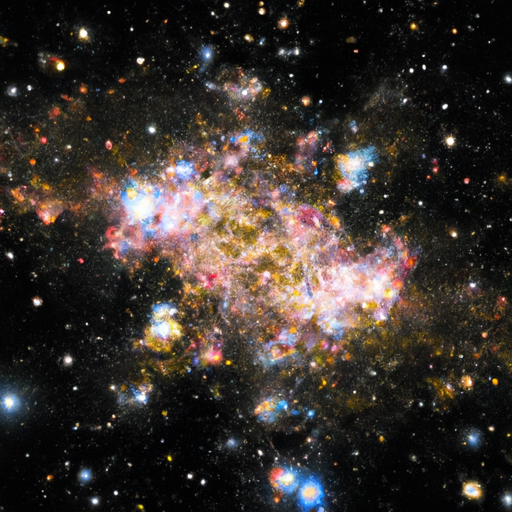In the vastness of the cosmos, an intriguing principle emerges: the Cosmological Principle. This principle seeks to unravel the secrets of the universe by exploring its homogeneity and isotropy. By studying these fundamental characteristics, scientists aim to understand the uniformity of matter distribution and the isotropy of physical laws on a large scale. Join us as we embark on a fascinating journey to delve into the intricacies of the Cosmological Principle, unveiling the remarkable symmetries that shape our universe.

I. Introduction
Welcome to our comprehensive article on the cosmological principle, a fundamental concept in the field of astrophysics and cosmology. In this article, we will explore the definition of the cosmological principle, discuss the concepts of homogeneity and isotropy of the universe, examine the evidence supporting these ideas, and analyze their implications on our understanding of the universe. We will also explore criticisms and alternative theories, as well as the future research and exploration in this fascinating field. So, let’s dive into the intricacies of the cosmological principle!
II. Definition of the Cosmological Principle
A. Explanation of the concept
The cosmological principle is a guiding principle in the study of the universe, based on the assumption that the physical laws and properties of the universe are the same everywhere and in all directions on a large scale. It proposes that the universe is both homogeneous and isotropic, meaning that it is fundamentally uniform and lacks any preferred or special directions. This principle provides a framework for our understanding of the universe and forms the basis for many important theories and models in cosmology.
B. Historical context
The roots of the cosmological principle can be traced back to the ancient Greeks who contemplated the nature of the universe. However, it was not until the early 20th century that the modern formulation of the principle took shape. The groundbreaking work of Albert Einstein and his theory of general relativity paved the way for a deeper understanding of the universe’s structure. Einstein’s theory combined with the observational discoveries by Edwin Hubble and others led to the development of the cosmological principle and its subsequent application in cosmology.
III. Homogeneity of the Universe
A. What is homogeneity?
Homogeneity refers to the uniformity or sameness of the universe on large scales. According to the cosmological principle, the distribution of matter and energy in the universe should appear statistically the same, regardless of the position or direction of observation. In simpler terms, if you were to hypothetically “zoom out” and observe the universe from a large-scale perspective, you would expect to see a roughly even distribution of matter and energy without any significant variations or clustering.
B. Evidence supporting homogeneity
One of the key pieces of evidence supporting the idea of homogeneity in the universe comes from the observation of the cosmic microwave background (CMB) radiation. The CMB is the remnant radiation from the early stages of the universe, and it exhibits an incredibly high degree of uniformity. Measurements of the CMB show that it has a nearly perfect distribution and isotropy across the sky, providing strong evidence for the overall homogeneity of the universe.
Additionally, large-scale surveys of galaxies and galaxy clusters have shown that their distributions are surprisingly uniform on average, reinforcing the notion of a homogeneous universe. These observations suggest that matter is distributed relatively evenly on cosmological scales, supporting the cosmological principle’s assumption of homogeneity.
C. Challenges to the concept of homogeneity
While there is significant evidence supporting the idea of a homogeneous universe, there are also some challenges to this concept. One such challenge arises from the observation of galaxy clusters and superclusters, which exhibit non-uniform distributions of matter on smaller scales. These structures form due to gravitational interactions, leading to apparent deviations from perfect homogeneity. However, these localized deviations do not necessarily contradict the overall homogeneity of the universe on larger scales.
Another potential challenge to the concept of homogeneity comes from the observation of cosmic voids, vast regions of space with relatively low matter density. The existence of these voids suggests the presence of under-dense regions, which may call into question the assumption of perfect uniformity. However, it is important to note that these voids are still relatively rare compared to the overall distribution of matter, and overall statistical analyses still support the concept of homogeneity.

IV. Isotropy of the Universe
A. What is isotropy?
Isotropy refers to the idea that the universe has no preferred or special directions, as if it looks the same from any given point or orientation. In an isotropic universe, the properties and physical laws should be invariant under rotations or translations. In other words, the universe should be fundamentally symmetrical in all directions.
B. Observational evidence for isotropy
Observational evidence for the isotropy of the universe can be found in various phenomena. One of the most convincing pieces of evidence is the uniform distribution of the cosmic microwave background radiation. The CMB exhibits the same properties and temperature regardless of the direction of observation. This consistency strongly supports the idea of isotropy on a cosmic scale.
Another key piece of evidence comes from the observations of distant galaxies and quasars. The large-scale surveys of these objects show no significant deviations or variations in their properties based on the direction of observation. These observations further support the isotropic nature of the universe.
C. Limitations and uncertainties
While the evidence for isotropy is strong, there are limitations and uncertainties in our measurements and observations. One potential limitation comes from the incomplete and limited survey of the observable universe. Due to the finite speed of light and the expansion of the universe, there may be regions beyond our observational reach that could exhibit deviations from isotropy. Additionally, small-scale fluctuations or perturbations in the distribution of matter and energy, such as those observed in galaxy clusters, can introduce uncertainties in our measurements of isotropy.
V. Correlations between Homogeneity and Isotropy
A. Relationship between homogeneity and isotropy
The concepts of homogeneity and isotropy are closely related in the cosmological principle. While homogeneity refers to the uniformity of the universe on large scales, isotropy delves into the idea that the universe lacks any preferred directions. Essentially, the uniformity observed across the universe supports the notion of isotropy, as the absence of preferred directions implies a homogeneously distributed matter and energy.
B. Connection to the Big Bang theory
The cosmological principle, with its assumptions of homogeneity and isotropy, is intimately connected to the Big Bang theory. According to the Big Bang theory, the universe originated from a singular point in space and has been expanding ever since. The observation of the CMB and its uniform temperature distribution provides crucial evidence for the Big Bang theory and reflects the homogeneity and isotropy assumed by the cosmological principle.
VI. Implications of the Cosmological Principle
A. Validating the foundations of cosmology
The cosmological principle serves to validate the foundations of cosmology. By assuming the homogeneity and isotropy of the universe, we can make accurate predictions and develop models that accurately describe various astrophysical phenomena. The principle acts as a guiding framework, allowing us to study the universe on a grand scale and understand its past, present, and future.
B. Impacts on our understanding of the universe
The cosmological principle and its assumptions of homogeneity and isotropy have profound impacts on our understanding of the universe. These assumptions form the basis for the development of cosmological models like the Lambda-CDM model, which describes the large-scale structure and evolution of the universe. Our understanding of cosmic expansion, the formation of galaxies and clusters, dark matter, and dark energy are all influenced by the cosmological principle.
VII. Criticisms and Alternative Theories
A. Challenges to the Cosmological Principle
While the cosmological principle has proved immensely useful in our understanding of the universe, it is not without its share of criticisms. One major challenge is the observation of the large-scale structure of the universe, which exhibits filamentary and web-like patterns rather than complete uniformity. Some argue that these structures question the validity of the assumption of homogeneity on scales larger than galaxy clusters.
Additionally, there are debates regarding the scale at which the cosmological principle holds true. Some propose that on smaller, sub-galactic scales, the universe might not exhibit full homogeneity and isotropy. These challenges prompt further exploration and revisions of the cosmological principle.
B. Alternative explanations for observed phenomena
In response to the challenges to the cosmological principle, alternative models and theories have been proposed. One such example is the concept of fractal cosmology, which suggests that the distribution of matter and energy in the universe may not be completely uniform on all scales but exhibits fractal-like patterns. Other theories propose modifications to general relativity or propose new fundamental forces or principles to explain observed phenomena. These alternative theories seek to better account for the inherent complexities and structures observed in the universe.
VIII. Future Research and Exploration
A. Advancements in technology and observations
The future of research and exploration in the field of cosmology holds great promise. Advancements in technology and observational capabilities continue to push the boundaries of our understanding. Improved telescopes, satellite missions, and large-scale surveys such as the Large Synoptic Survey Telescope (LSST) will provide even more detailed and comprehensive data, allowing us to further test and refine the cosmological principle.
B. Areas of further investigation
There are several areas of further investigation that could enhance our understanding of the cosmological principle. Exploring the nature of cosmic voids and large-scale cosmic structures could shed light on the limits of homogeneity and isotropy. Additionally, studying the cosmic microwave background radiation with higher precision measurements and improved statistical techniques could provide more insights into the early universe and its properties. Continued research on dark matter and dark energy, as well as exploring the potential connections between quantum mechanics and cosmology, also hold promise for future investigations.
IX. Conclusion
In conclusion, the cosmological principle, with its assumptions of homogeneity and isotropy, has played a pivotal role in our understanding of the universe. The evidence from cosmic microwave background radiation, galaxy distributions, and the overall symmetry of observed phenomena strongly support the idea of a homogeneous and isotropic universe on large scales. While challenges and alternative theories exist, the cosmological principle remains a foundational concept, validating the frameworks of modern cosmology. As technology advances and research progresses, our understanding of the universe and the cosmological principle will continue to evolve, unraveling more of the mysteries that lie within the vast expanse of our cosmos.